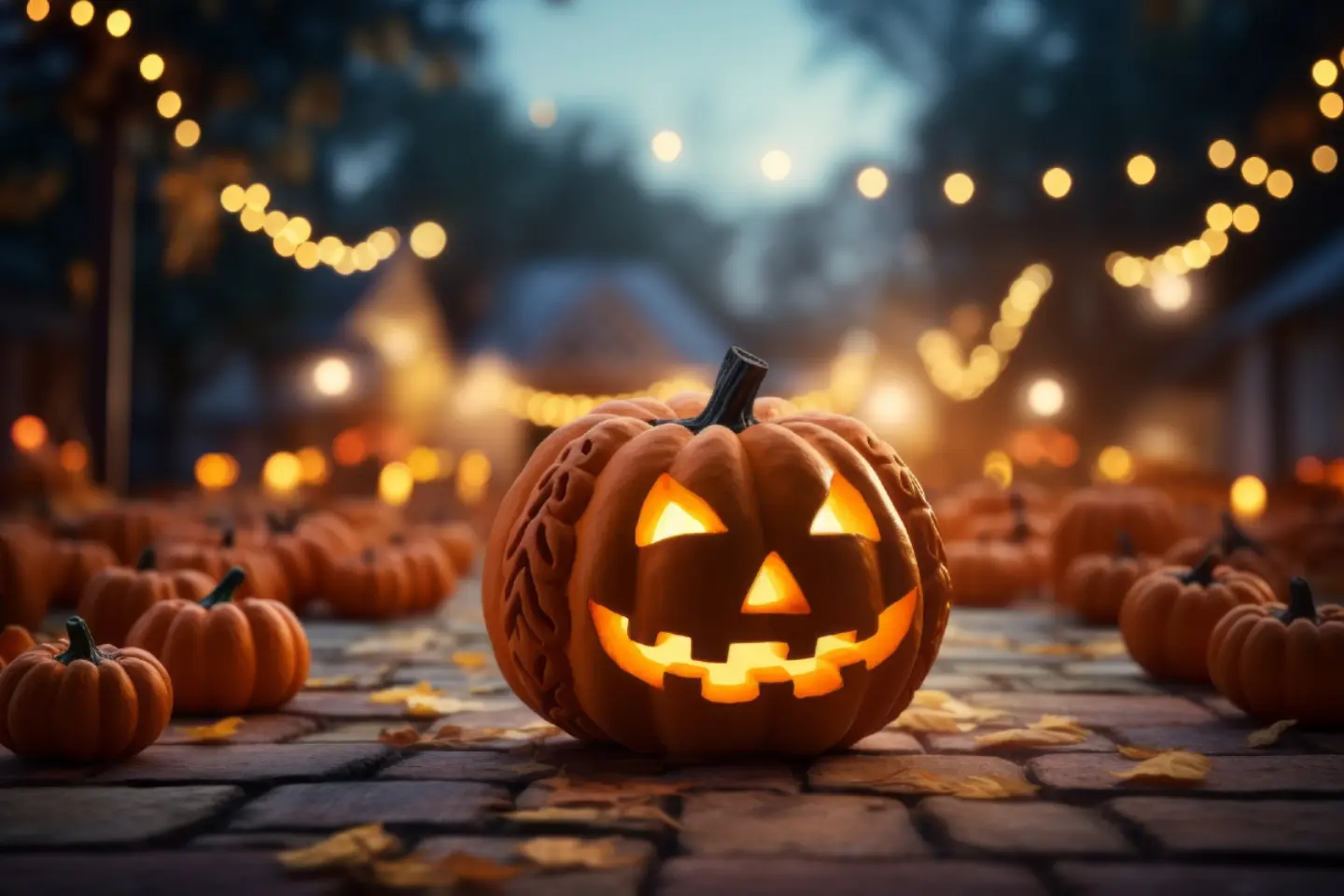As twilight descends on the final evening of October, a familiar sight adorns doorsteps and windowsills across Britain and other parts of the world where Halloween is celebrated – the grinning visage of the jack-o'-lantern. Carved with care or sometimes with gleeful abandon to create a grotesque or comical face, the illuminated pumpkin has become the emblem of Halloween. But how did this vegetable come to be associated with ghouls, ghosts, and trick-or-treating?

The tale begins not with a pumpkin, but with a man. Legend has it that there was once an unsavory character named Stingy Jack, an Irish blacksmith who managed to trick the devil not just once, but twice. By cleverly trapping the devil, Jack secured a promise that his soul wouldn't be taken to hell upon his death. However, this cunning came at a cost. When Jack eventually died, he was denied entry to heaven due to his unscrupulous life, and the devil, spitefully remembering their deal, refused him access to hell.
Left to wander in darkness, with only a burning coal to light his way, Jack placed the ember in a hollowed-out turnip to create a makeshift lantern. This spectral figure, known as "Jack of the Lantern" or Jack O'Lantern, roamed the earth without rest.
The connection between Jack's tale and the pumpkin begins with the tradition of carving vegetables that dates back to ancient practices. The Celts, celebrating Samhain, a festival marking the end of harvest season and the onset of winter, believed that the barrier between the realms of the living and the dead became permeable on this night. To fend off evil spirits or guide the souls of the departed, they would carve grotesque faces into turnips, beets, and potatoes, placing embers or candles within.
These traditions were brought to America by Irish immigrants fleeing the potato famine in the 19th century. They discovered that the native pumpkin, larger and easier to carve than a turnip, made a perfect vessel for their ancient customs. The pumpkin's robust skin and hollow interior provided a canvas for creativity and a chamber for illumination, making it an effective tool for continuing their Samhain practices in a new world.
The carving of pumpkins was intertwined with Halloween in America, where it's also associated with the harvest time. Quintessentially American in its adaptation, the pumpkin was embraced in Britain during the 20th century even though Halloween had older, more subdued roots in the country, with the carved vegetables bringing a vibrant, visual element to the occasion.
The jack-o'-lantern's expression, often a malevolent grin, serves as both a representation of the spirits or ghouls that supposedly roam freely on Halloween and as a protective talisman to ward off evil spirits. In this way, the pumpkin has a dual role – as a symbol of the spirits of Halloween and as a sentinel guarding homes from those very same spirits.
Carving the pumpkins has also evolved into an artistic and social event. Communities and families gather for pumpkin carving parties, sharing designs and techniques to create a variety of expressions from the whimsically charming to the downright sinister. The designs span from traditional faces to intricate tableaus, showing the versatility of this humble vegetable as a medium for folk art and communal expression.
Moreover, the popularity of the jack-o'-lantern speaks to broader themes in our culture. The transformation of the pumpkin from a simple gourd to a flickering specter reflects the human fascination with metamorphosis and mystery, while the personalization of each face carved into its surface mirrors our innate desire to leave our mark and participate in communal storytelling. The act of illuminating the carved pumpkin points to the universal human impulse to bring light to the darkness, to hold at bay the uncertainties that nightfall brings.
As Halloween approaches, the sight of pumpkins appearing in shop windows and homes seems to signal a collective embrace of the season's spirit. The jack-o'-lantern, in its silent, grinning watchfulness, has become more than a seasonal decoration. It represents a bridge between the past and present, an artifact of folklore made anew each year by the countless individuals who carve their fears and fantasies into its pulpy flesh.
In the darkness, lit by the flickering light of countless jack-o'-lanterns, Halloween finds its emblem—a simple pumpkin, transformed through legend and tradition into a symbol of the season. Whether regarded as a token of protection, an emblem of the harvest, or a connection to otherworldly realms, the Halloween pumpkin continues to enchant and captivate, ensuring the legend of Stingy Jack lives on in the candlelit smiles that pierce the October night.
